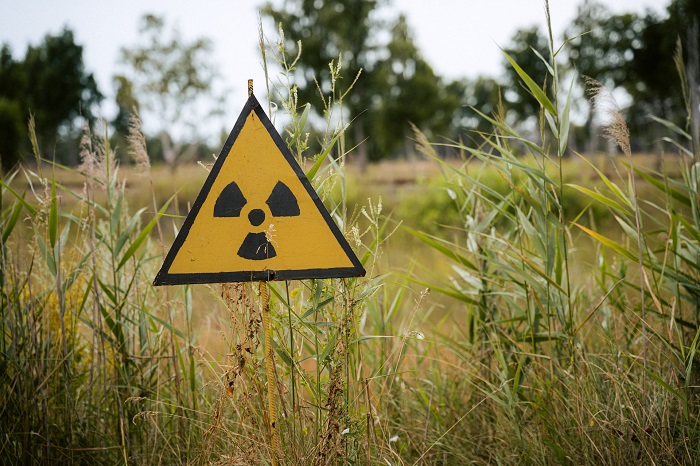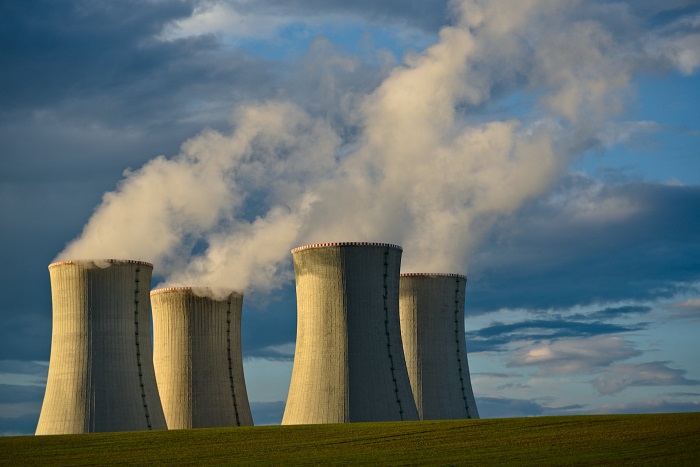ISABEL RUBIO ARROYO | Tungsteno
Throughout history, there have been no end of proposals to dispose of nuclear waste: from catapulting it into space, disposing of it between tectonic plates or burying it deep underground on remote islands. Today it is stored in places like the Hanford Site in Washington State, USA, which is considered the world's largest nuclear graveyard. In its 177 underground waste tanks, there are 200,000 cubic metres of high-level radioactive waste. The energy crisis and the war in Ukraine are prompting an unexpected return to nuclear power around the world. We analyse the pros and cons of nuclear energy and the challenges it poses, for example, in disposing of radioactive waste.
A big push for nuclear energy
Nuclear power provides about 10% of global electricity generation, according to the International Energy Agency: "It has historically been one of the largest global contributors of carbon-free electricity and while facing significant challenges in some countries, it has significant potential to contribute to power sector decarbonisation." The organisation stresses that nuclear power has avoided about 55 gigatonnes of CO2 emissions over the past 50 years, "nearly equivalent to two years of global energy-related CO2 emissions."
In recent months, several countries have strengthened their commitment to nuclear energy. From 1 January 2023, investing in certain nuclear power plants will be considered "sustainable" by the EU. Their main argument for this change is that it emits virtually no greenhouse gases. For a nuclear power plant to be considered "sustainable", one of the requirements is that the country where it is installed must have final repositories for low and intermediate level radioactive waste already in operation and detailed plans to open a disposal facility for high-level waste by 2050.
The German government, meanwhile, has announced that it will keep its last three nuclear plants in operation, a reversal of a popular nuclear phase-out policy that began after the Fukushima accident. The move, prompted by the escalating economic war with Russia and rising fossil fuel prices, marks the first departure from a two-decade policy focused on abandoning nuclear power.
Japanese Prime Minister Fumio Kishida also announced in August that the government would restart several idled nuclear plants and develop plans to build new, more advanced reactors. The move comes about a decade after the country suffered the disaster at the Fukushima nuclear power plant. On 11 March 2011, Japan was rocked by an earthquake and subsequent tsunami that caused waves more than 10 metres high and ended with the explosion at the Japanese atomic plant and the release of large amounts of radioactivity into the environment.
The European Commission has recently recognised nuclear power as "green". Credit: DW News
Nuclear power plant accidents and other risks
Such accidents, and others like those caused at Chernobyl in 1986, generate radiation that can remain present in the environment for years, according to the International Atomic Energy Agency. In fact, radioactive water from the Fukushima plant is still an urgent problem ten years after the nuclear accident. In addition to the fact that such accidents have harmful effects on animals and plants, they can also damage human health.
Humans can become contaminated if they ingest or breathe in radioactive materials or if these come into contact with their skin, hair or clothing, according to the US Centers for Disease Control and Prevention (CDC). "Beyond certain thresholds, radiation can impair the functioning of tissues and/or organs and can produce acute effects such as skin redness, hair loss, radiation burns or acute radiation syndrome," adds the World Health Organisation, which stresses that populations exposed to radiation may also be at increased risk of developing cancer. All these consequences, combined with catastrophes such as Chernobyl and Fukushima, have fuelled public opposition to nuclear power, Sharon Squassoni, a research professor at George Washington University and board member at the Bulletin of the Atomic Scientists, tells the website Grid.
The Fukushima Daiichi nuclear power plant accident occurred on 11 March 2011. Credit: BBC News
The nuclear waste dilemma
Nuclear power has other limitations. Some reports indicate that its reactors are seen as increasingly uneconomical and too slow to reverse carbon emissions. Added to this, the dilemma of how to manage nuclear waste has plagued industry, academics and governments for decades. All sorts of ideas have been proposed, but most have been rejected as impractical, too expensive or ecologically unacceptable. For example, some have suggested sending the waste into space, immobilising it in synthetic rock, burying it in ice sheets, dumping it on the world's most isolated islands or disposing of it in the deepest ocean trenches.
To store radioactive waste until it disintegrates or until a better solution is found, many powers use nuclear graveyards. Governments and industry consider that deep burial of this waste is, at least for the time being, the best solution. But there are those who see some limitations to this alternative. Paul Dorfman, founder of the Nuclear Consulting Group, tells The Guardian that "the bitter reality is that there is no scientifically proven way of disposing of the existential problem of high- and intermediate-level waste. . . . But given the huge technical uncertainties, if disposal does go ahead and anything goes wrong underground in the next millennia, then future generations risk profound widespread pollution," he says.

Nuclear power can generate radioactive waste that must remain isolated for centuries. Credit: Unsplash
There is no doubt that the global energy crisis and the need to reduce greenhouse gas emissions and mitigate the effects of climate change have put nuclear power at the centre of the debate. It is not the first time that this type of energy has gained popularity amidst uncertainty about energy supply. Squassoni recalls that the oil crisis in the 1970s "was what convinced France and Japan to go all in on nuclear. I’ll be curious to see if this panic about energy scarcity has a boosting effect for nuclear energy," she concludes.
· — —
Tungsteno is a journalism laboratory to scan the essence of innovation. Devised by Materia Publicaciones Científicas for Sacyr’s blog.
